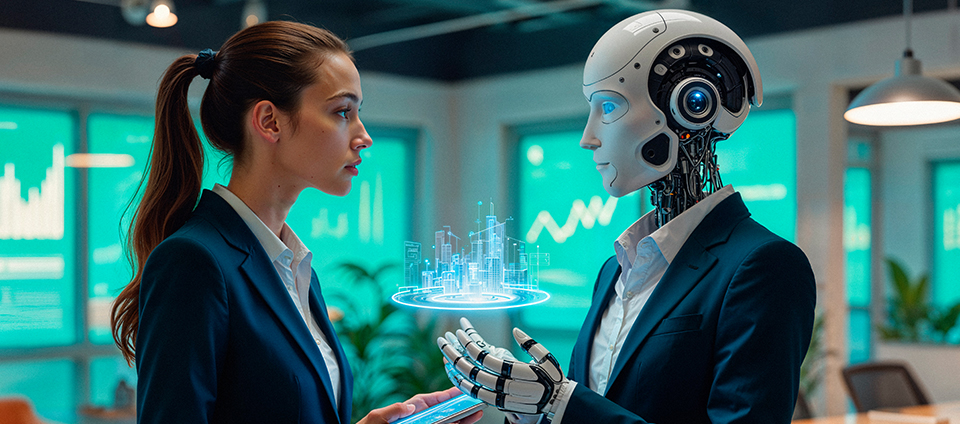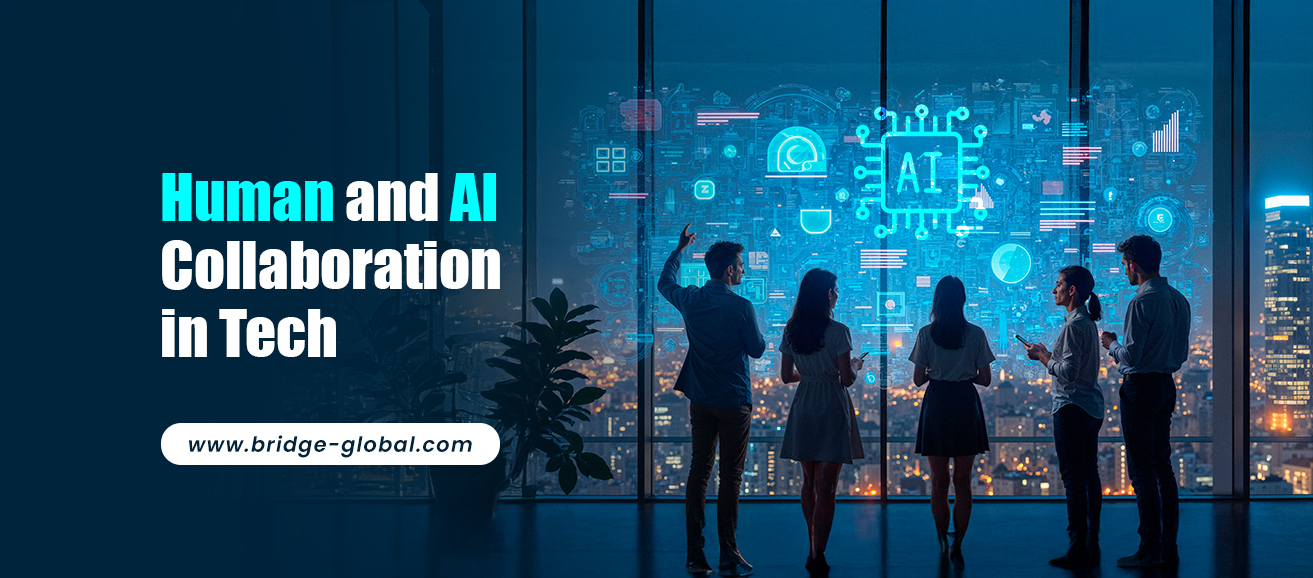Human + AI Synergy: The Future of Smarter, Faster Software Development
Today’s software world is transforming fast and at the heart of that transformation is human and AI collaboration in tech. Software teams now work side-by-side with intelligent systems, ushering in an era where AI-assisted software development is not just a novelty, it’s a necessity. Every AI development company sees firsthand how artificial intelligence development fused with human insight is shifting the fundamentals of software engineering.
This blog explores how this synergy is reshaping the entire software development lifecycle (SDLC). We’ll dive into how humans and machines complement each other, the role of generative AI development, and where to begin if you're evaluating AI integration services. The practical goal is to show how AI software solutions combined with human expertise can create better, faster, and more reliable software.
Human and AI collaboration in Tech: Redefining the SDLC
Traditional SDLC stages: requirement gathering, design, coding, testing, deployment, and maintenance; were built on human effort. While dedicated engineers and testers remain at the core, they tussle with repetitive work, delays, and changing requirements. And then comes artificial intelligence development: tailored algorithms and models now automate routine work while humans focus on strategy, architecture, and problem-solving.
By weaving generative AI into these stages, software teams not only meet deadlines, often ahead of them but deliver improved quality with reduced risk. The result? A faster pipeline that still leans on human values.
The Symbiosis: Combining Strengths
AI-assisted software development delivers speed, consistency, and efficiency. It excels at generating repetitive code, automating test cases, and scanning for defects. However, AI lacks domain insight, creative problem-solving, and ethical judgment - all hallmarks of human intelligence.
This human + AI synergy unlocks innovative capabilities. Developers no longer grind through boilerplate code. Instead, AI tooling shortens that work to minutes. Engineers can pivot to designing solutions, refining user experiences, and injecting domain-specific visions that deliver superior outcomes.
In mobile app development, for instance, AI-driven templates and testing automation can reduce time-to-market dramatically. But it is the UI/UX experts, product managers, and mobile engineers who craft the user experience tailored to specific audiences and contexts.
How AI Enhances Each SDLC Phase

1. Requirements & Planning
Before generative AI, teams relied on interviews, spreadsheets, and manual documentation. Now, AI can parse existing attachments, chat logs, and stakeholder records to suggest project scope, user flows, and feature backlogs. It flags inconsistencies and missing requirements. Humans then shape these insights with strategy, ensuring relevance and alignment.
2. Design & Architecture
Generative AI can create wireframes, mockups, data models, and even basic architecture diagrams. It provides alternatives and optimization suggestions. Designers and architects retain oversight - choosing the best options, refining aesthetics, and ensuring all technical constraints are met. This synergy accelerates ideation but keeps human judgment at the helm.
3. Development
AI development company toolkits like GitHub Copilot or Tabnine offer real-time code suggestions, error detection, and boilerplate generation. Developers carry forward with complex logic, API design, performance optimization, and domain-driven implementation. The code becomes faster and leaner, with more time for deep work.
4. Testing & Quality Assurance
Quality always plays the role of gatekeeper. Generative AI helps by producing test scripts for multiple use cases, including edge cases often overlooked by humans. Regression tests become automated. Then, QA analysts review outputs, validate test accuracy, and interpret logs. The result? Fewer missed bugs and higher release confidence.
5. Deployment & CI/CD
AI can automate deployment configurations, generate scripts, and monitor production health. It's part of AI integration services that transform deployment into a continuous, reliable process. Humans remain involved in release planning, rollback decisions, and cross-team coordination.
6. Maintenance & Support
In-field issues get another layer of efficiency. AI tools can suggest fixes based on error logs and historical data. Engineers make final fixes and code improvements. AI also predicts issues before they happen. Human judgment decides if and how to address them.
Spotlight: Mobile App Development Use Case
In mobile contexts, UI/UX matters. A mobile engineer once spent weeks coding navigation, data handling, and conforms. By leveraging AI-generated component code, he compressed this into days, enabling more testing and polish. Meanwhile, AI-launched test scenarios caught crashes across multiple Android versions. The development time for the project dropped by 40%, with quality unchanged or improved.
Here, AI drove efficiency. Humans applied context. Together, they won.
What Makes This Work? Five Success Factors
1. Purposeful Task Allocation
Not everything suits AI. Allocate pattern-based or repetitive work to AI. Leave architecture, ethics, user experience, and stakeholder decisions to humans.
2. AI Transparency and Trust
Make AI decisions explainable and monitorable. Teams should see why certain codes or tests were auto-suggested and have final approval.
3. Cultural Shift
Educate developers on prompt engineering, AI ethics, and collaborative workflows. Align incentives so efficiency gains aren't penalized by oversight and review.
4. Governance and Governance
Establish frameworks to manage IP rights, code ownership, security, and compliance, especially for AI software development companies catering to regulated industries.
5. Build with Purpose
Pilot small. Show early wins with AI-powered solutions. Scale based on metrics: time saved, defect rates, release cycles.
Emerging Trends in Human + AI Collaboration

End-to-End AI Pipelines
Some experimental platforms allow requirements to flow, via plain language, into functioning prototypes. Continuous feedback is evaluated based on performance. Humans coach and course-correct.
Citizen Development
Low-code platforms, powered by generative AI development, allow domain experts to build simple applications with little coding. IT teams oversee quality and scale.
AI Governance Roles
Expect roles like “AI Ethicist” or “Prompt Engineer” to mature within teams, people who guide responsible adoption and continuous improvement.
Ever-learning Systems
Systems that adapt based on usage patterns and incidents, proactive in suggesting improvements before issues arise.
Overcoming Real-World Challenges
Security & IP
Ensure sensitive code and IP aren’t exposed to third-party AI. Use on-prem models or vetted enterprise systems.
Fairness & Bias
Avoid over-rely on AI suggestions. Humans review for bias in UX, language, and performance across demographics.
Consistency with Core Vision
Check AI-generated solutions align with branding, architectural standards, and long-term strategy.
New Skills Required
Provide training on artificial intelligence development, prompt crafting, testing integration, and cross-functional collaboration.
The Role of an AI Development Company
Whether building internal tooling or customer-facing platforms, an AI software development company can guide integration. Their AI integration services will include training, model customization, and governance frameworks. Strategically implemented, humans and machines can co-create, from custom mobile apps to full-stack enterprise systems, with speed and precision.
Looking Ahead: A Collaborative Roadmap
2025 Vision
AI speeds up initial prototype generation while humans refine end-to-end experience.
2027 Vision
Human-AI co-authoring becomes standard. Pilot platforms begin auto-adjusting to user telemetry.
2030 Vision
Human-AI partnerships evolve into “peer” development squads. Systems learn from every commit and release.
Humans stay in the loop, not as overseers, but as creative leaders. AI handles scale, monitoring, and predictable work.
Conclusion
This is not a battle between humans and machines - it’s a revolution through human and AI collaboration in tech. Together, we approach software craft more thoughtfully, swiftly, and reliably. From mobile app development to enterprise architectures, the software development lifecycle is evolving.
For companies ready to lead, whether you're a forward-thinking startup or a seasoned enterprise, implementing human-AI synergy will unlock growth, quality, and creativity.
You can explore the future with a strategic AI partner to support your journey, from proof-of-concept to enterprise-grade deployment with scalable, secure AI-powered solutions, careful generative AI development, and complete AI integration services baked in.



